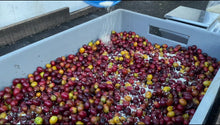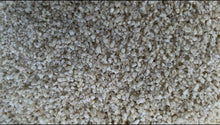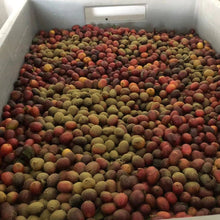light-medium roast. notes of peach, dry sherry, and jasmine
region: tolima, colombia
producer: elias & shady bayter
varietal: pink bourbon
process: koji
elevation: 1,460 masl
importer: forest coffee
about the koji process, from forest coffee:
Koji is grown on steamed rice, cooled, and inoculated with Aspergillus Oryzae spores. In this way, it is incubated for 3 to 4 days at 42ºC. Afterward, white cotton-like wool appears completely covering the rice, which is when the koji is ready for harvesting. It is the mycelium of the new strain of Aspergillus Oryzae - these fungal spores when ripe are pale green in color. Koji is high in catalytic enzymes including amylase, which converts starch into simple sugars. Along these lines, a new method of coffee fermentation with koji has been developed. unlike other methods, fermentation with koji does not add any external notes to the coffee, but rather favors the creation of new sugars by the bean itself.
Koji is the fungus used to define the flavor of many of the basic ingredients of Japanese gastronomy, such as soy sauce, miso, or rice vinegar. To work, koji spores are mixed with a steamed base ingredient and left to act, transforming the starch into sugar and releasing a variety of fatty acids and amino acids ideal for the production of, for example, sake or soy sauce. In koji fermentation, instead of producing alcohol, carbon dioxide, or organic acids, it has the ability to transmit its substrate in a different way than the yeasts or bacteria used in regular coffee fermentations. Depending on the variables used in each fermentation, koji transforms the sugar starch, making the most of the sugars naturally present in each bean.
As for coffee, koji serves as a processing agent, however, for our purposes, koji would serve as a transformation agent, sacrificing polysaccharides and complex starches. All this makes them available for secondary fermentation by other microbes, as well as for enzymatic processes within the coffee itself while producing glutamates that improve cup structure.
According to what has been mentioned and after the fungus (Koji) has been harvested from the rice it is crushed, generating a powder. At the same time, the ripe fruits have already been harvested from the coffee trees. The coffee beans are poured into plastic containers that do not exceed 5 cm in height, ensuring that the coffee is uniform, thus providing air in the fruits as it is an aerobic fermentation. At this point, the koji spores are poured over the cherries evenly. It should be noted, however, that this process should be carried out for at least 24 to 72 hours for the Koji to develop on the fruits and work its magic. Subsequently, the coffee with the spores of the fungus is dried in silos to avoid the decomposition of the coffee cherries. It is important to note that the drying process should be slow and gradual, and it is also important to keep in mind that the temperature should not exceed 34ºC. The result of a cup of coffee fermented with koji is a cup with more body, more sweetness, and a long aftertaste. In short, koji is capable of bringing out sugars in the coffee that are impossible to achieve in conventional fermentations.






